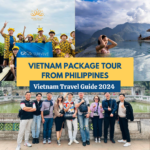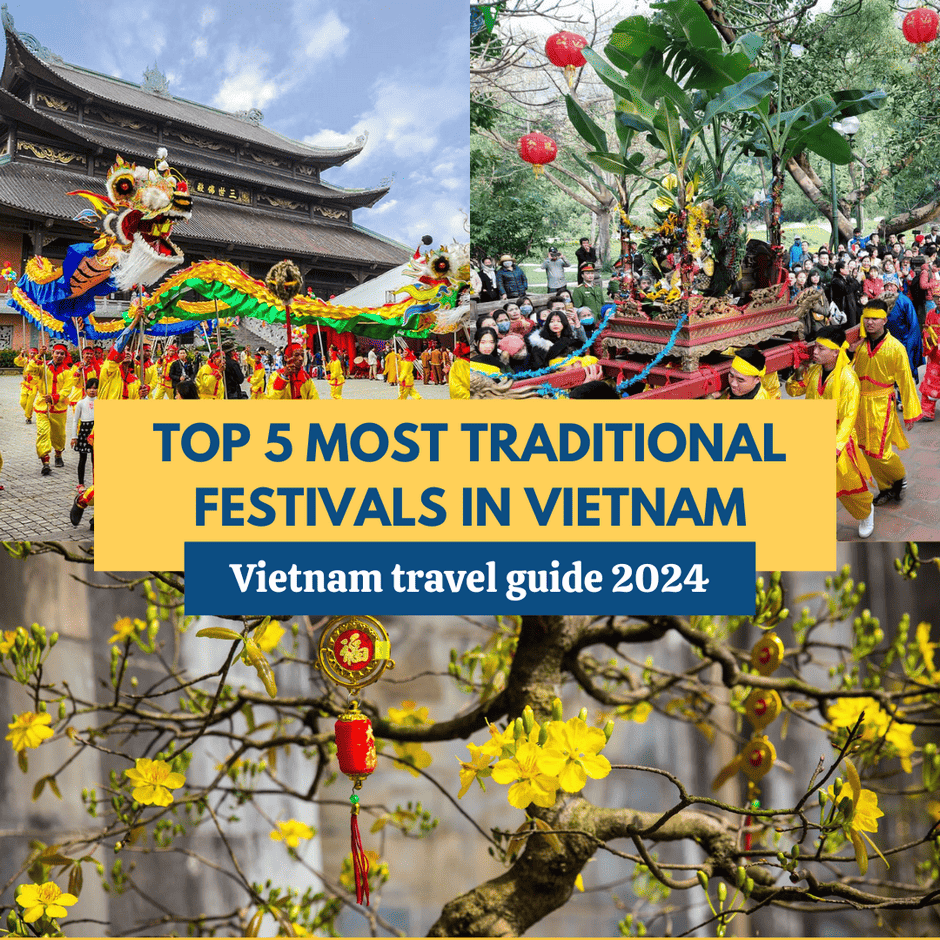
Top 5 most traditional festivals in Vietnam 2024
What are some traditional festivals in Vietnam is a country with a rich and diverse culture, reflected in its many festivals and holidays throughout the year. These festivals are not only occasions for fun and entertainment, but also for expressing gratitude, honoring ancestors, and celebrating the values and beliefs of the Vietnamese people. In this blog, Prime Travel will introduce you to the culture and traditions of Vietnam with the Top 5 traditional festivals so that you can experience the authentic and vibrant spirit of this beautiful country.
The cultural meaning of traditional festivals in Vietnam
1. The characteristics of traditional festivals in Vietnam
- Vietnamese festivals are cultural events that reflect the history and spirit of the people. They honor the gods, who are either historical or mythical figures, and show gratitude for their blessings. The gods embody the virtues of humanity, such as courage, compassion, and wisdom. They are the heroes who defended the country, developed the land, healed the sick, or influenced the natural world. Vietnamese festivals are a way of paying respect to the gods and their legacy.
- Vietnamese festivals also connect the people to their roots, whether natural or national. They celebrate the sacred bond between the land and the people, and the shared identity and values of the community. By worshiping the same god, the people strengthen their unity and resilience, and aspire for a better life.
- Vietnamese festivals showcase the creativity and diversity of the culture. They are a source of enjoyment and education for all social classes. They combine spiritual elements with competitive and entertaining games, and pass on the moral traditions from generation to generation.
- Vietnamese festivals are also an outlet for the people’s emotions and desires. They express their hopes and fears, and ask for the gods’ favour and guidance.
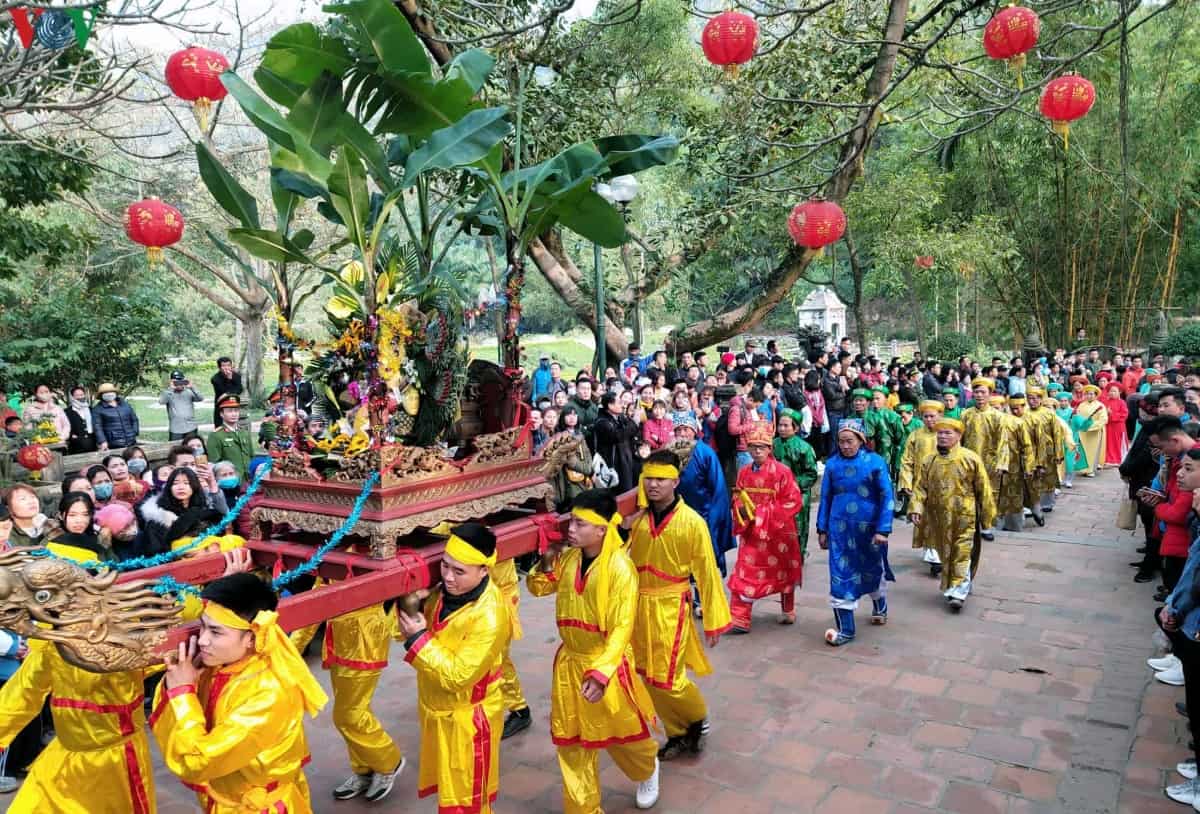
Traditional festivals in Vietnam: Cultural meaning of celebrating ( Source: Internet )
Read more>>>Vietnamese people: An essential cultural insight for travelers 2023
2. The process of organizing traditional Vietnamese festivals
Vietnamese festivals have three main stages:
- Preparation: This involves two phases: the long-term preparation that starts right after the previous festival, and the short-term preparation that happens before the festival day. The preparation includes checking and arranging the worship items, clothes, decorations, and cleanliness of the worship place and statues.
- The festival day: This is the most important and attractive part of the festival. It includes various activities, such as processions, offerings, and games. These activities determine the timing and appeal of the festival.
- The end of the festival: This is when the organizers thank the participants and close the worship place.
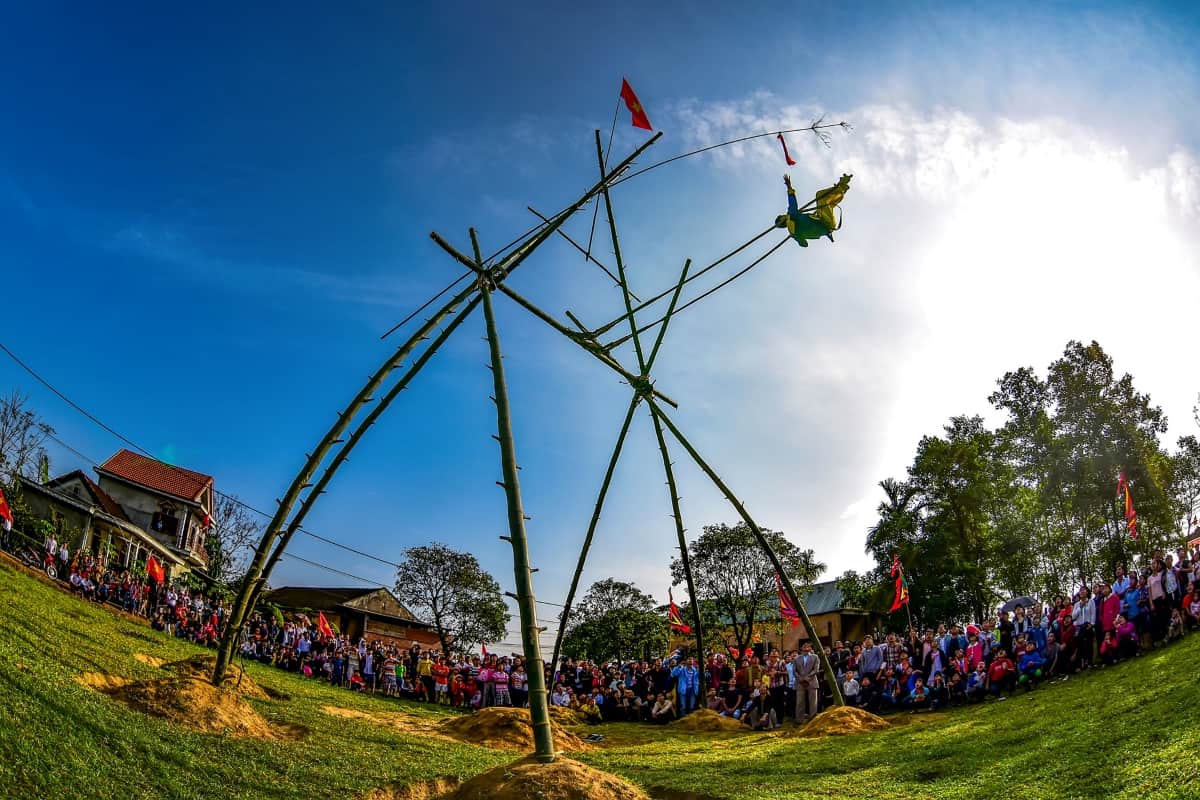
Traditional festivals : Process of celebrating festivals in Vietnam ( Source: Internet )
3. Time to celebrate traditional festivals in Vietnam
Vietnamese people usually organize festivals in spring (especially in January) and autumn (around September and October). The reason why traditional Vietnamese festivals are often held at this time is because:
- This is the time when the weather is mild, pleasant and cool, not too hot and stuffy like summer or cold and frosty like winter. The outdoor activities during the festival are more convenient and enjoyable.
- As a country that focuses on wet rice agriculture, the festivals must take place when the farmers are idle, which is also known as the time when they have just finished harvesting. Then people have more free time to have fun, gather and do not need to worry too much about the crops they are planting.
- Moreover, Vietnamese people have a saying “January is the month of fun”. This is a phrase that many Vietnamese use as a catchphrase when they allow themselves to rest, postpone work, and suspend projects to prioritize the first month of the year to enjoy spring, offer incense, pray for wealth and luck for the new year.
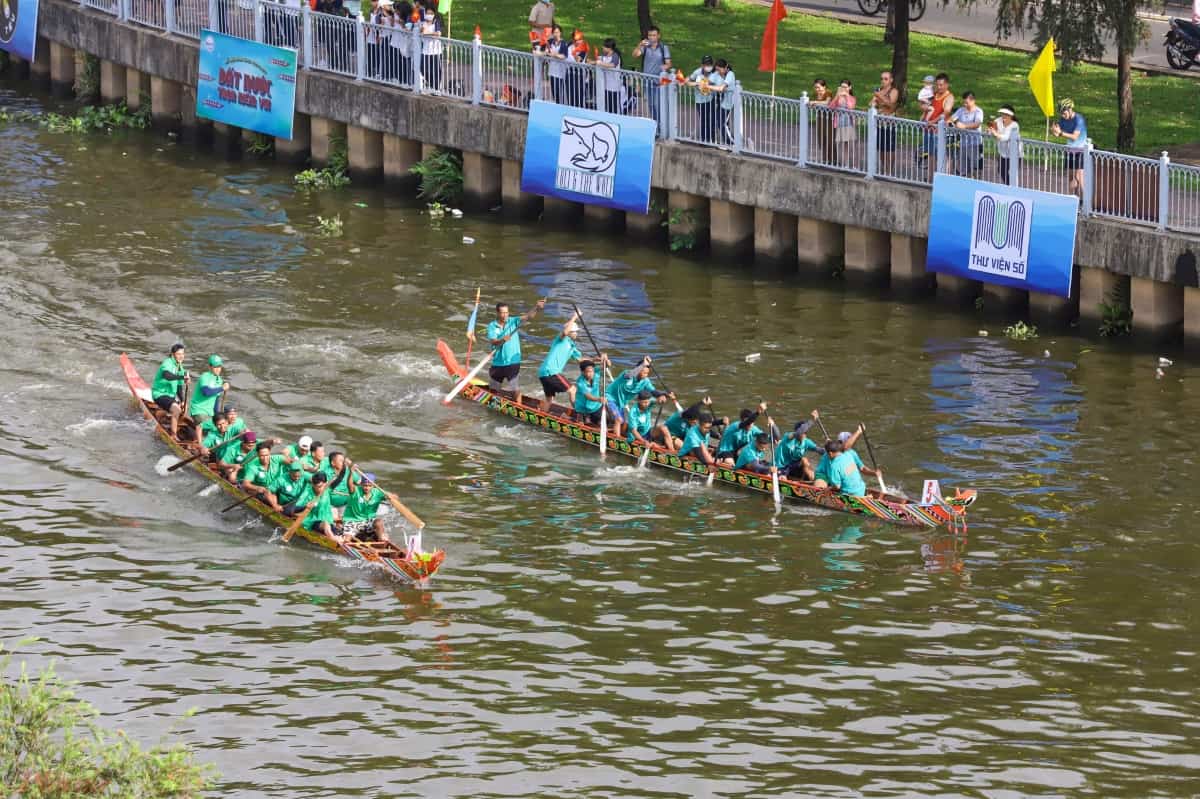
Spring is the great time to celebrate festival in Vietnam ( Source: Internet )
Read more>>>Top 5 best Vietnamese traditional food that you must try
Top 5 traditional festivals in Vietnam
Vietnam has many festivals and holidays throughout the year, but some of them are more popular and significant than others. Here are the top 5 festivals that you should not miss if you want to experience the culture and traditions of Vietnam.
1. Lunar New Year (Tet Nguyen Dan)
Lunar New Year, or Tet, is the most important and celebrated festival in Vietnam. It marks the beginning of the lunar calendar, and the arrival of spring. It is a time for family reunions, ancestral worship, house cleaning, and new year wishes. It usually falls in late January or early February, and lasts for about a week.
The origin of Tet can be traced back to ancient times, when the Vietnamese people worshiped the sun and the moon, and celebrated the change of seasons. The word Tet comes from the Chinese word for feast, and it signifies the joy and abundance of the new year. The customs and traditions of Tet vary from region to region, but some common ones are:
- Cleaning and decorating the house with flowers, fruits, and lucky symbols, such as the peach blossom, the kumquat tree, the red paper, and the five-fruit tray.
- Preparing and enjoying special foods, such as the sticky rice cake (banh chung), the pickled vegetables (dua mon), the boiled chicken (ga luoc), and the candied fruits (mut).
- Visiting and greeting relatives, friends, and neighbors, and exchanging gifts and lucky money (li xi).
- Going to pagodas and temples to pray for good fortune, health, and happiness.
- Watching and participating in various cultural activities, such as the lion dance, the dragon dance, the fireworks, and the folk games.
If you’re planning to travel to Vietnam during Tet holiday, read our blog A Travelers Guide to Vietnam During Tet Holiday (Vietnamese Lunar New Year) to navigate this festive and busy season.
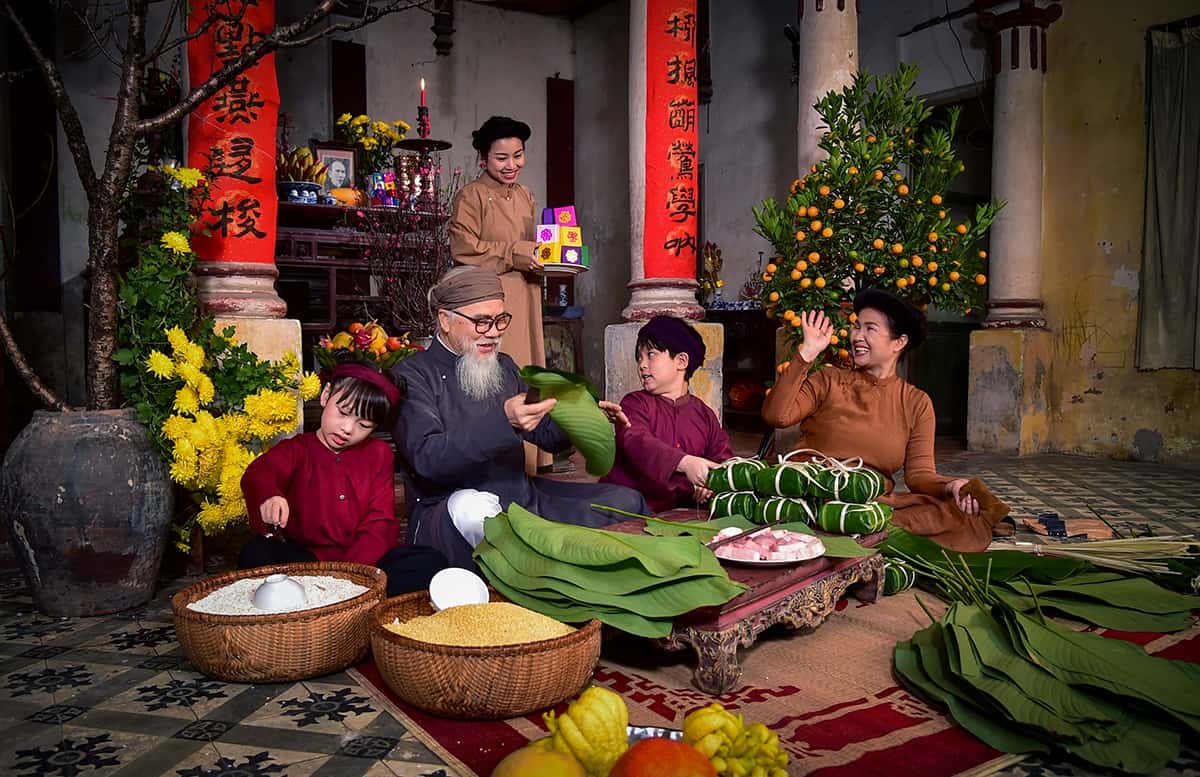
Lunar New Year is the most important and celebrated festival in Vietnam ( Source: Internet )
Read more>>>Best Vietnam Holiday Itinerary Ideas for Senior 2024
2. Mid-Autumn Festival (Tet Trung Thu)
Mid-Autumn Festival, or Tet Trung Thu, is the second most popular festival in Vietnam. It is also known as the Children’s Festival, or the Moon Festival, as it celebrates the full moon, the harvest, and the children. It usually falls in late September or early October, and lasts for one night.
The origin of the Mid-Autumn Festival can be linked to the legend of Cuoi, a poor woodcutter who found a magical banyan tree that could heal any illness. He planted the tree in his yard, and took good care of it. However, one day, his wife accidentally spilled dirty water on the tree, and it flew to the moon. Cuoi tried to chase after it, but he could not catch it. He was left alone on the earth, looking at the moon and longing for his tree. The Vietnamese people believe that on the night of the Mid-Autumn Festival, Cuoi can be seen sitting under the banyan tree on the moon, and they light lanterns and candles to show him the way back home.
The customs and traditions of the Mid-Autumn Festival are mainly focused on the children, and some common ones are:
- Making and eating moon cakes, which are round pastries filled with various ingredients, such as lotus seeds, mung beans, eggs, and nuts. The mooncakes symbolize the reunion, the gratitude, and the wishes of the people.
- Making and carrying lanterns, which are colorful and shaped like animals, stars, or flowers. The lanterns symbolize the brightness, the joy, and the dreams of the children.
- Singing and dancing, which are performed by the children in groups, wearing masks and costumes. The songs and dances are based on folk tales, legends, or historical stories, and they convey the messages of love, courage, and wisdom.
- Playing and competing, which are done by the children in various games, such as the lion dance, the dragon dance, the lantern riddle, and the moon gazing.
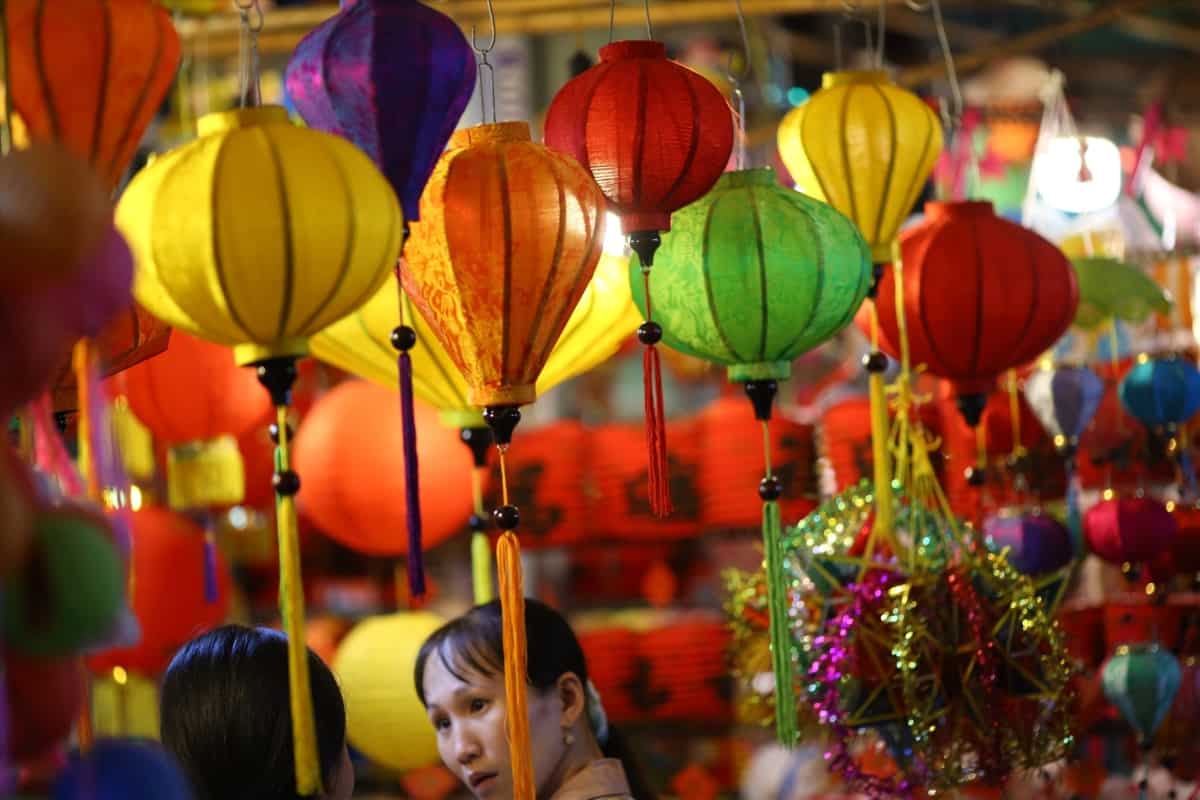
Mid autumn festival – Festival in Vietnam for children ( Source: Internet )
3. Hung Kings Temple Festival (Gio To Hung Vuong)
Hung Kings Temple Festival, or Gio To Hung Vuong, is a national festival that honors the Hung Kings, the legendary founders of the first Vietnamese state. It is a time for patriotism, gratitude, and unity. It usually falls on the 10th day of the third lunar month, and lasts for three days.
The origin of the Hung Kings Temple Festival can be traced back to the legend of Lac Long Quan and Au Co, the mythical parents of the Vietnamese people. Lac Long Quan was a dragon king who ruled the sea, and Au Co was a fairy who lived in the mountains. They fell in love and gave birth to a sac of 100 eggs, which hatched into 100 sons. Later, they decided to separate, and each took 50 sons with them. Lac Long Quan went back to the sea, and Au Co went to the mountains. The eldest son, Hung Vuong, followed his mother and became the king of the land. He founded the Van Lang state, and established the capital at Phong Chau, where he built a temple to worship his parents. He was succeeded by his sons and grandsons, who were known as the Hung Kings. The Vietnamese people regard the Hung Kings as their ancestors, and they celebrate their achievements and sacrifices every year.
The customs and traditions of the Hung Kings Temple Festival are mainly focused on the pilgrimage, and some common ones are:
- Visiting and worshiping at the Hung Temple, which is located on the Nghia Linh mountain, in Phu Tho province. The temple complex consists of several shrines, tombs, and monuments, dedicated to the Hung Kings and their family members. The pilgrims offer incense, flowers, fruits, and cakes, and pray for the blessings of the Hung Kings.
- Watching and joining in various cultural activities, such as the procession, the ceremony, the music, and the folk games. The procession is the highlight of the festival, as it involves the participation of the government leaders, the local authorities, the villagers, and the visitors. The procession starts from the foot of the mountain, and goes up to the main temple, where the ceremony is held. The ceremony includes the reading of the royal decree, the offering of the tribute, and the singing of the national anthem. The music and the folk games are performed by the local artists and groups, and they showcase the diversity and the vitality of Vietnamese culture.
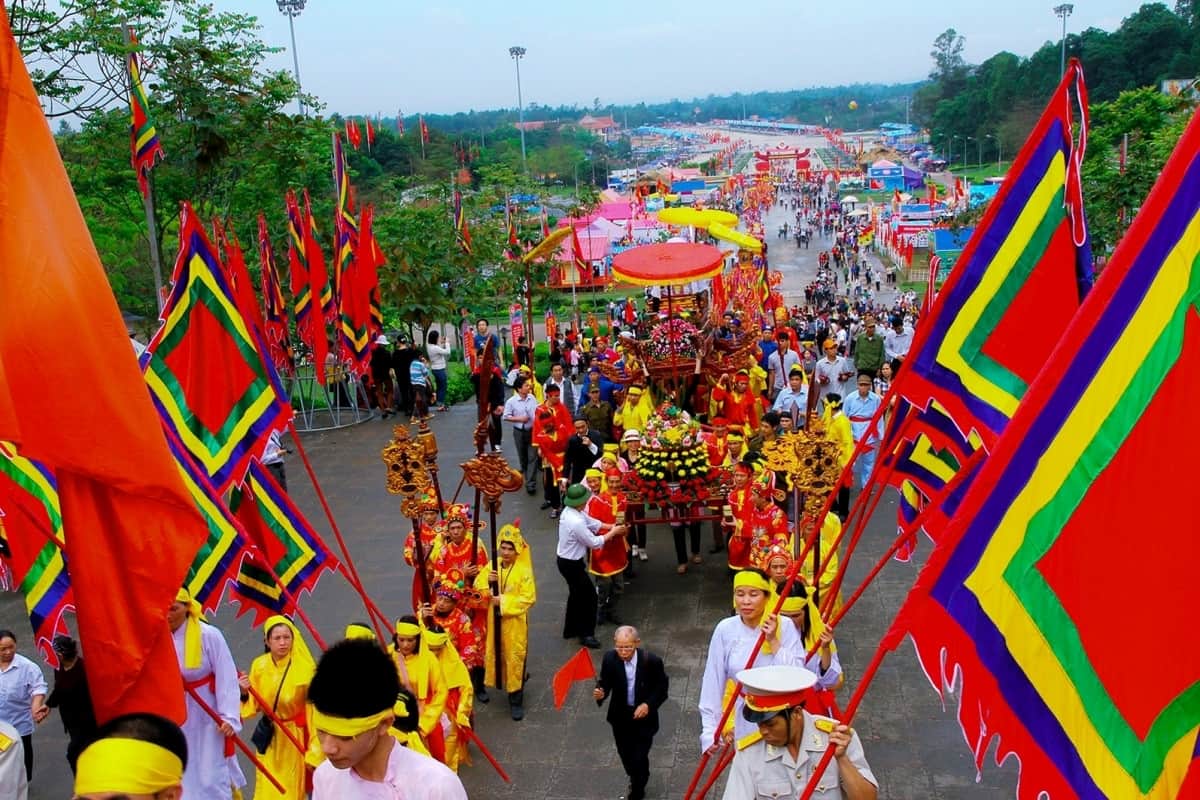
Hung King festival – One of the most traditional festivals in Vietnam ( Source: Internet )
Read more>>>Vietnam trip cost: The best budget-friendly from Australia 2024
4. First Full Moon Festival (Tet Thuong Nguyen)
First Full Moon Festival, or Tet Thuong Nguyen, is a Buddhist festival that celebrates the first full moon of the lunar year. It is also known as the Lantern Festival, or the Buddha’s Birthday, as it commemorates the enlightenment and the nirvana of the Buddha. It usually falls in late February or early March, and lasts for one night.
The origin of the First Full Moon Festival can be linked to the legend of Muc Kien Lien, a disciple of the Buddha who had a vision of his mother suffering in hell. He asked the Buddha for help, and the Buddha told him to make offerings to the monks and the nuns on the 15th day of the first lunar month, when the positive energy of the full moon was the strongest. Muc Kien Lien followed the Buddha’s instructions, and his mother.

Traditional festivals in Vietnam: First Full Moon Festival ( Source: Internet )
5. Vu Lan Festival (Tet Trung Nguyen)
Vu Lan Festival, or Tet Trung Nguyen, is a Buddhist festival that honors the parents, especially the mothers, and the ancestors. It is also known as the Ghost Festival, or the Wandering Souls Day, as it is believed that the gates of hell are opened, and the spirits of the dead are freed to visit the living. It usually falls on the 15th day of the seventh lunar month, and lasts for one night.
The origin of the Vu Lan Festival can be linked to the legend of Maudgalyayana, another disciple of the Buddha who had a vision of his mother suffering in hell. He asked the Buddha for help, and the Buddha told him to make offerings to the monks and the nuns on the 15th day of the seventh lunar month, when the merit of the donations would be multiplied by hundreds of thousands. Maudgalyayana followed the Buddha’s instructions, and his mother was liberated from hell. He was so happy that he danced with joy, and he encouraged others to do the same for their parents and ancestors.
The customs and traditions of the Vu Lan Festival are mainly focused on the filial piety, and some common ones are:
- Visiting and worshiping at the pagodas and temples, where the monks and the nuns chant the sutras and pray for the peace and happiness of the living and the dead. The pilgrims offer incense, flowers, fruits, and vegetarian food, and receive a red or white rose, which they pin on their chest. The red rose means that their parents are still alive, and the white rose means that their parents have passed away.
- Making and releasing lanterns, which are paper boats or lotus flowers with candles inside. The lanterns are floated on the rivers, lakes, or ponds, and they symbolize the guidance and the salvation of the wandering souls.
- Giving and receiving gifts, which are usually clothes, food, or money. The gifts are given to the poor, the homeless, or the orphaned, and they represent the gratitude and the generosity of the donors. The gifts are also given to the parents, the elders, or the teachers, and they express the respect and the love of the children, the juniors, or the students.

Vu Lan festival in Vietnam : The festival to commemorate the ancestor and parents ( Source: Internet )
Read more>>>5 Steps to find the best Vietnam tour operators for your trip
Things to know when joining festivals in Vietnam
- Check the lunar calendar and the festival dates. Most of the festivals in Vietnam follow the lunar calendar, which means that they may vary from year to year in the Gregorian calendar. Therefore, it is important to check the exact dates of the festivals that you are interested in, and plan your trip accordingly.
- Have proper behavior, attitude, enthusiasm, responsibility, manners, and work style that are civilized and polite.
- Have awareness of keeping the environment clean and beautiful; do not push or shove, causing disorder and insecurity; burn incense and paper money at the designated places
- Dress neatly and decently; do not swear, insult the spirituality, or affect the solemn atmosphere of the relics and festivals in Vietnam.
- Do not organize or participate in any superstitious, extremist, gambling activities and any acts that violate the law.
- Do not perform currency exchange with price difference in the area of relics and festivals in Vietnam.
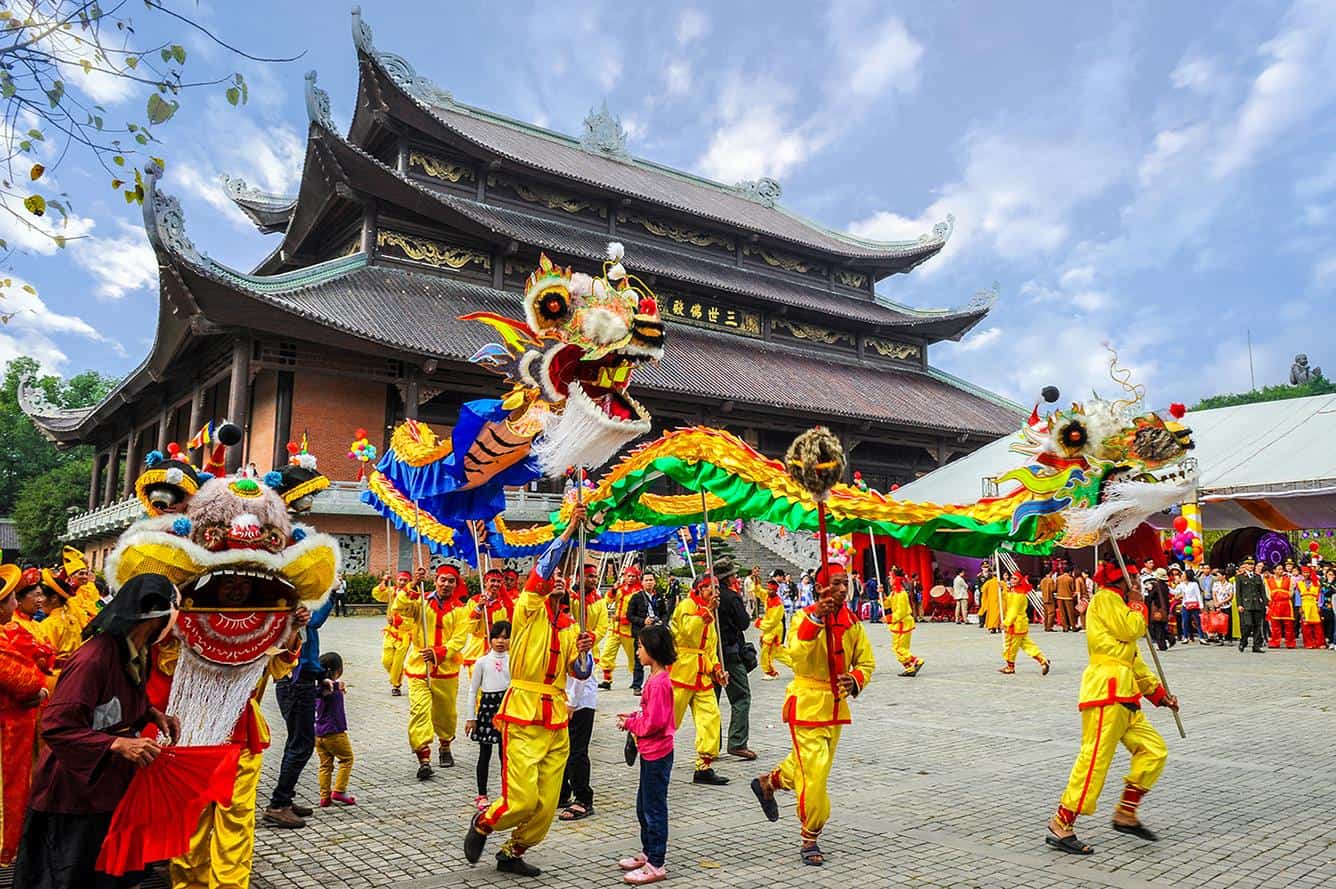
Things to know when joining festivals in Vietnam ( Source: Internet )
Read more>>>
Hoi An Lantern Festival 2025 – 2026: Dates and Top Things To Do
Tips to travel Vietnam for senior travelers [ Update 2024 ]
Check out Prime Travel’s tours here:
Good Morning Hanoi with Motorbike
Authentic Vietnamese coffee workshop



